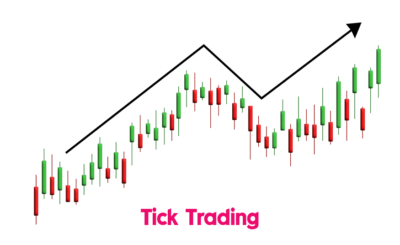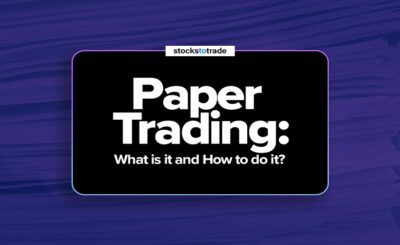In the dynamic world of finance, Contract for Difference (CFD) trading has emerged as a popular derivative instrument. Volatility, characterised by rapid and unpredictable price fluctuations, is inherent in financial markets. For CFD traders, navigating through volatile market conditions can be challenging yet rewarding. In this article, we delve into the techniques essential for CFD trading in volatile markets, equipping traders with strategies to thrive amidst uncertainty.
Understanding Volatility in CFD Trading
Volatility refers to the degree of variation in the price of a financial instrument over time. In CFD trading, volatility manifests as sharp and erratic price movements, presenting both opportunities and risks for traders. Factors such as economic data releases, geopolitical events, and market sentiment contribute to market volatility. Understanding the nature and drivers of volatility is crucial for devising effective trading strategies.
Volatility can be measured using statistical tools such as standard deviation or historical volatility, providing insights into the magnitude and frequency of price fluctuations. High volatility environments often coincide with increased trading activity and market uncertainty, requiring from tradersa deep understanding of how to trade CFD and readiness to regularly adapt trading strategies.
Risk Management Strategies
In volatile markets, managing risk is paramount to preserving capital and sustaining profitability. Implementing risk management techniques such as setting stop-loss and take-profit orders helps limit potential losses while allowing for profit-taking at predetermined levels. Additionally, adopting position sizing techniques, such as the Kelly Criterion or fixed-percentage risk, ensures prudent allocation of capital and protects against excessive drawdowns. Diversification across asset classes and instruments further mitigates risk by spreading exposure across different market segments.
Traders should also consider the concept of correlation, which measures the degree to which two financial instruments move in relation to each other. By diversifying across assets with low correlation, traders can reduce overall portfolio risk and minimise the impact of adverse market movements.
Technical Analysis Tools
Technical analysis plays a pivotal role in CFD trading, especially in volatile markets where price movements can be erratic. Utilising technical indicators and chart patterns aids traders in identifying essential support and resistance levels, facilitating informed decision-making.
Volatility indicators such as Bollinger Bands and Average True Range (ATR) provide insights into market volatility, helping traders gauge the potential magnitude of price swings. Momentum indicators like the Relative Strength Index (RSI) and Moving Average Convergence Divergence (MACD) assist in identifying overbought or oversold conditions, guiding entry and exit points.
In addition to standalone technical indicators, traders often combine multiple indicators to form robust trading strategies. For example, a trader may use a combination of moving averages and momentum oscillators to confirm trend direction and identify optimal entry and exit points.
Fundamental Analysis in Volatile Markets
In addition to technical analysis, fundamental analysis remains relevant in volatile markets. Economic events, such as central bank announcements and employment reports, can significantly impact market volatility. Traders analyse macroeconomic indicators, such as GDP growth, inflation rates, and interest rate decisions, to assess the underlying health of economies and anticipate market reactions. Furthermore, corporate earnings reports and geopolitical developments influence investor sentiment and market dynamics, underscoring the importance of incorporating fundamental analysis into trading strategies.
To stay informed about upcoming economic events and news releases, traders often use economic calendars and news feeds to monitor market-moving events and adjust their trading strategies accordingly.
Adaptive Trading Strategies
Flexibility is vital when trading in volatile markets, necessitating adaptive trading strategies tailored to prevailing market conditions. Scalping and day trading techniques are suited for capturing short-term price fluctuations and capitalising on intraday volatility. Swing trading strategies, on the other hand, aim to capture medium-term trends, allowing traders to ride out price swings while managing risk effectively. Long-term investing approaches, focusing on fundamental value and growth prospects, provide resilience amidst short-term market volatility, offering opportunities for sustainable returns over time.
Traders should remain vigilant and responsive to changing market dynamics, adjusting their strategies as market conditions evolve. By incorporating a mix of short-term and long-term trading techniques, traders can adapt to varying levels of volatility and capitalise on market opportunities across different time horizons.
Backtesting and Continuous Learning
To refine trading strategies and adapt to evolving market conditions, traders must engage in continuous learning and performance evaluation. Backtesting historical data allows traders to assess the effectiveness of their strategies in different market environments, identifying strengths and areas for improvement.
Leveraging demo accounts and simulation tools provides hands-on experience without risking capital, enabling traders to test new ideas and refine their skills in a risk-free environment. Embracing a growth mindset and actively seeking feedback from peers and mentors fosters a culture of continuous improvement, enhancing trading proficiency over time.
By embracing a proactive approach to learning and development, traders can stay ahead of the curve and remain competitive in dynamic and volatile markets. Continuous learning not only enhances trading skills but also fosters adaptability and resilience in the face of changing market conditions.
Conclusion
Navigating volatile markets requires a multifaceted approach encompassing risk management, technical and fundamental analysis, adaptive trading strategies, psychological resilience, and continuous learning. By incorporating these techniques into their trading arsenal, CFD traders can navigate through uncertainty with confidence, capitalise on opportunities, and mitigate potential risks effectively. As volatility remains a constant feature of financial markets, mastering these techniques equips traders with the skills and resilience to thrive in dynamic trading environments.









